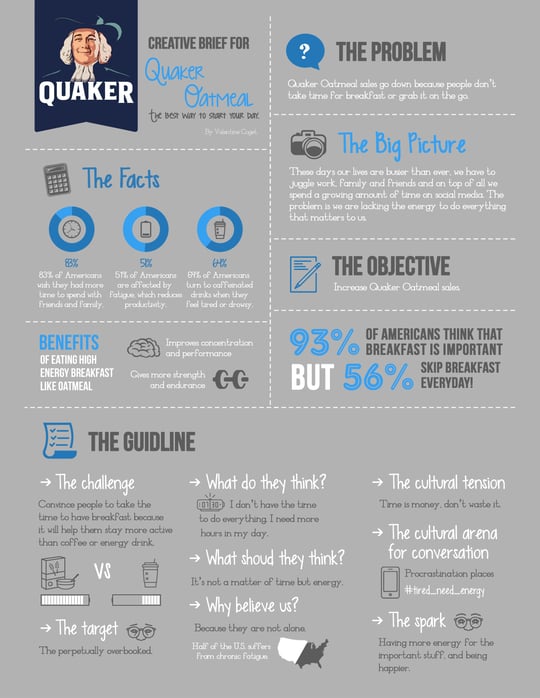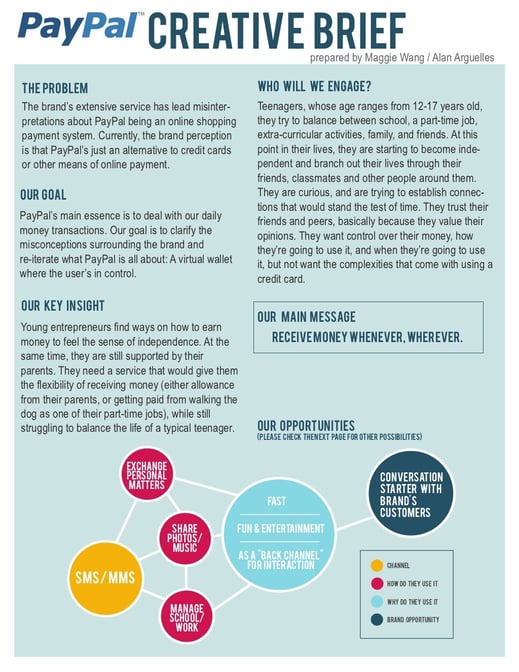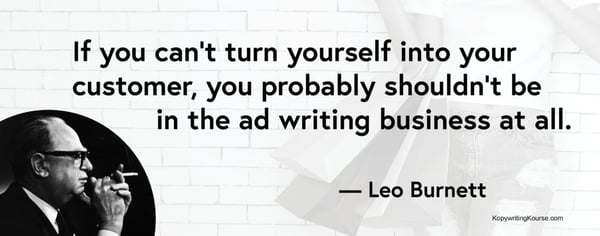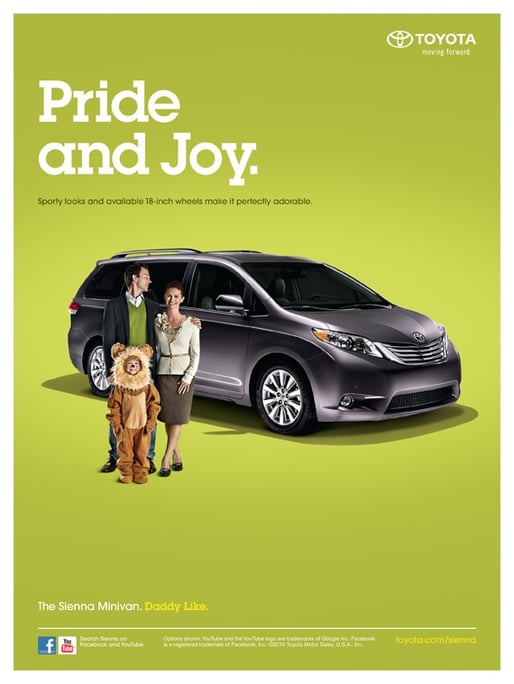Writing a Creative Brief for an Advertising Agency
Are you ready to finally understand what makes up an awesome creative brief and how to create your own? In this post, we'll cover Communication - including the creative brief- is the cornerstone of success for any marketing campaign. And yes, it's more important than the creativity. As Will Burns of Ideasicle says, the creative brief is the "most sacred of all sacred ad documents". From the choice of font in a print ad to the overall theme of the campaign, everything springs from the creative brief. The creative brief is the foundation of a creative campaign. Despite its importance, it is poorly understood, mostly because of its open-ended nature. This section will help you understand creative briefs and their purpose better. A creative brief is a short 1-2 page document outlining the strategy for a creative project. Think of it as a map that guides its target audience - the creative team - on how to best reach the campaign's stated goals. The creative brief is usually created by the account manager in close consultation with the client. To that effect, it's an interpretation of the client's ideas and vision for the brand and the product. Since this brief is usually created by and for the agency, it is open-ended in nature. You can - and should - include anything and everything that will help the creative team understand the brand and product better. Most creative briefs include the following: For example, here's a creative brief for Hush Puppies: Essentially, the creative brief describes the "what" of the project (i.e. its objectives) and "how" to achieve it (i.e. the creative approach). There is a long list of reasons to create a creative brief. The most important reason is also the simplest: it is standard agency practice. Your clients will expect a creative brief before they sign-off on a project. And your creative team will expect it before they can start working. For better or for worse, you can't start a campaign without it. But there are other reasons to create a creative brief: Nominally, the person responsible for managing the client relationship makes the creative brief. Usually, this is the account manager or the project manager. This person works closely with the client to understand their requirements, their current situation, and the desired future outcomes. Actually putting together the brief, however, isn't a one-person job. You usually need input from a range of people such as: It might surprise you to learn that the end user of the creative brief isn't the client. Rather, it's the creative team. While you'll certainly need the client's approval on the brief to get the go-ahead, the people who'll actually use it are your creative team. Your job, thus, is to interpret the client's vision in such a way that it is accessible to the creative team. This means no jargon, no fluff, and no "marketer-speak". Create the brief in such a way that a designer or developer can understand it. At the same time, the creative brief is not the answer to the client's problem; it's a starting point to inspire your team. It should have just enough insight to challenge your team and get them to think creatively about the problem. As one commentator points out, it's always good to ask yourself: "Are you confident that this brief will inspire a solution to our problem?" If the answer is a "no" or a "maybe", it's time to go back to the drawing board. What Are Some Creative Brief Examples? The best way to understand a creative brief is to see a few real-life examples. Here's a creative brief for Reebok shoes. This brief focuses extensively on the audience. In a competitive, brand-focused market, understanding the audience is crucial for created better targeted marketing. Here's a more visual creative brief for Quaker Oats. This one has an unorthodox structure. If you look closer, however, you'll notice that it has the same fundamentals as Reebok's brief above. For another example of an unorthodox creative brief, take a look at this one for Paypal. It eschews conventional sections and uses a bold visual design instead. This just goes to show that creative briefs are flexible in their content and design. You can use whatever format you need as long as it works for both the client and the creative team. In the next section, I'll walk you through the ideation process for making a creative brief. When it's wrapped up, the creative brief doesn't look like much. It's at most 2 pages long. A good one will usually be free of jargon and marketer-speak. Many will also be visual. The effort that goes into creating this simple document, however, is immense. You have to have an acute understanding of the brand, the product, its target audience, and the message. To write a good creative brief, you need to know five aspects of the campaign: A creative campaign starts and ends with the product. After all, this is what you're tasked with selling. If you don't understand it well, you can't expect your creative team to do a good job of it. Start by asking the client some fundamental questions about the product: Your goal is to map the product's current brand perception. This will be a combination of factors - price, quality, perceived quality, etc. Use the client's existing records, market surveys, and customer data to understand the product and its brand better. You'll use it later when you write the creative brief. The business and the product can often have a complex relationship. In some cases, the business brand might be completely independent of the product. In most other cases, they might affect each other in a symbiotic relationship. For example, Toyota (the company) and Toyota Camry (the car) have different brand perceptions. A customer might see Toyota as "reliable" and "efficient". But he might see Camry as "unreliable" after a spate of recalls. Business and product brand perceptions often bleed into each other. If a customer has repeated bad experiences with a product, he might associate that with the business itself. The exception is when the business is "invisible" to the customer. This usually happens with B2B brands, holding companies, etc. For example, Luxottica manufactures several iconic eyewear brands such as Ray-Ban, Oakley, etc. But the Luxottica brand itself is invisible to customers. Poor performance from one of its product is unlikely to affect its brand perception. Your goal should be to: In the creative brief, this information will be a core part of the campaign's "background" section. For example, this brief for Red Bull introduces the problem by framing it in context of the business: The 'market' is a combination of the "Three C's": All these have a marked influence on the campaign. For example, the popular "Mac vs PC" campaign wouldn't be successful if Apple was the market leader. Similarly, an overly positive, upbeat campaign wouldn't work in a down economy. Your goal should be to analyze the following aspects of the market: Competitors: Context: For example, to celebrate its 100th anniversary, Oreo aligned itself with a bunch of cultural and historical events: In a time of "activist brands", businesses are increasingly aligning their products with social and cultural movements. Think of how you can tap into the zeitgeist to create a better brand message. Category: Your customers are important, more so than anything else on this list. (Image source) A deep understanding of the target audience, its wants, desires, and tastes is crucial for writing a creative brief. To do this, start by describing the following: For example, Toyota sells an MPV - Toyota Sienna - that had shrinking market share. Part of the reason for this decline was the general unpopularity of MPVs among young parents. For a lot of young people, MPVs are "boring" and "old school". To get these customers to consider Sienna as an alternative, Toyota had to change their perceptions. To do this, Toyota created a YouTube campaign highlighting the the inherent "coolness" of the Sienna, such as this music video: Every campaign has a specific goal, message, and audience. It's not uncommon for brands to run several campaigns at the same time with different messages. Your job is to understand the goals for your campaign and find a way to get there. That is, to define the campaign's strategy and approach. To do this, answer the following questions: Your goal is to find the "driving idea" for campaign and where to run it. For example, the driving idea for the Toyota Sienna campaign I shared earlier was: "Awesome parents drive the Toyota Sienna" This campaign didn't highlight the car. Instead, it highlighted the customers and how their aspirations align with the car. Since the target audience was young parents, all print ads specifically highlighted them. (Image source) This approach was specific to only this campaign. Toyota had other ongoing campaigns for the Sienna. These campaigns targeted a completely new audience with a different message. This might seem like a lot of research - and it is - but it is crucial for writing creative briefs. Without understanding the campaign, customers, and product, your briefs will be off-brand. And if the brief is off-brand, the results will suffer. This is why I recommend getting input from several people. Ask your marketers for data and creative team for ideas. The more information you have, the better the final brief. In the next section, I'll walk you through the actual process for writing a creative brief. Download our two free creative brief templates to learn exactly what to include & start writing awesome creative briefs today. Creative briefs don't have a fixed format. Most agencies have their own templates. Some have a simple text document, while others use more visual designs. Regardless of its format, your creative brief must revolve around the five elements we covered earlier. To write the creative brief, use the following template: Start your creative brief by writing a broad overview of the project. Establish the identity of the client, talk about the product, and list the goals of the campaign. Every campaign has a key challenge. This is the "what" of the project. Describe this challenge in a few short sentences. You might have something like this: For example, here's the key challenge in the Quaker Oats creative brief I shared earlier: 3. Purpose of Communication A successful campaign needs a clear and distinct purpose. This purpose should ideally be trackable and measurable. It should also be tied to the key challenge you described above. Use this section to describe the action you want to inspire in your customers. Try something like this: The client's competitors, as we learned above, have a big impact on the campaign. Use this section to briefly describe the key competitors and their media strategy. Some things you can include about the competition here are: Refer to the audience research you did earlier to describe the following: Briefly describe the background and context of the campaign. Include specific details for the following: For example, this creative brief for TOMS shoes gives readers a detailed overview of the company's background and its customers' aspirations: Use adjectives to describe the tone, brand voice, and key qualities you want customers to associate with the: Briefly describe how you plan to spread the message. Include the following Include details about the estimated budget for the campaign. If possible, breakdown budget requirements by creative-type and promotion. This is the "driving idea" behind the campaign. Usually, it's a short, pithy statement that condenses the campaign into a slogan. Think of something like this from Reebok: Or this one from Paypal: One way to write a better creative brief is to create a press release that you might send journalists at the end of the campaign. You don't have to actually use it, but it helps you think of the campaign's goals and the approach you used to get there. These are only guidelines, of course. You can change the creative brief as per your requirements. As long as your creative team can understand it, you are free to include or exclude anything you want. Workamajig has built-in support for creative briefs. This brief has up to 12 questions that will pre-populate based on the project-type and can be customized according to your needs. Click the link below to get your free Workamajig Demo.
The creative brief is the foundation of any successful creative campaign. It outlines the client's vision and ensures that everyone is on the same page. So let's get started!

Creative Briefs, Explained
What is a Creative Brief?
Why Do You Need a Creative Brief?
Who Creates the Creative Brief?
Who is the Creative Brief Made for?


The 5 Elements of an Effective Creative Brief
1. The Product
We make Workamajig, the all-in-one project management suite built for creative teams

2. The Business
3. The Market
4. The Customers

5. The Campaign

How to Write a Creative Brief
1. The Project
2. Key Challenge
4. Competitors
5. Target Audience
6. Background or Context
7. Tone and Brand Voice
8. Media Strategy
9. Budget
10. Chief Message

Writing a Creative Brief for an Advertising Agency
Source: https://www.workamajig.com/blog/creative-brief
0 Response to "Writing a Creative Brief for an Advertising Agency"
Post a Comment